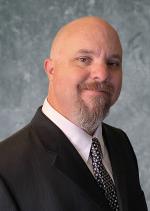CHICAGO — Insurance may not be the most exciting thing a business owner will ever buy — it pains many owners to pay for something they never intend to use — but it can make the difference between survival and closing when disaster strikes. In Parts 1 and 2 of this series, we’ve discussed the basic components of small-business insurance and the special needs dry cleaners have in this area. For the conclusion, we’ll examine how to find a balance between cost and risk, and some common mistakes drycleaning companies make when it comes to insurance.
Q: Taking everything — deductibles, insurance premiums and coverage — into consideration, how can cleaners find the balance so that their small business is adequately covered while choosing a plan that’s affordable?
Harry Carranza, president, Select Risk Insurance Services Inc.: Be willing to invest some time to learn how to evaluate your appetite for risk and how to make the right choices, as proper insurance is one of the most overlooked decisions of small-business owners. Make sure you interview and select an adviser with experience in your business. Be willing to take the time to thoroughly gather proper underwriting information for your business (most of our new clients complain we ask too many questions, but this is important to avoid misrepresentation traps, proper asset protection, and establishing adequate budgets for insurance expenses). Focus more on having a broad range of coverages with higher retentions (deductibles) than less coverage with low deductibles, which is the route many dry cleaners go. My philosophy is a large deductible may be painful but a large uncovered loss could destroy the business.
Establish periodic, annual times to get on a Zoom- or Skype-type call to review changes or updates to the business. Also, don’t challenge your broker to save a few bucks every year, it’s a colossal waste of time. Focus on building a relationship of trust and transparency and then thoroughly market every three to five years to level-set your program and account for changes in the marketplace.
Lastly, if you can’t afford to insure and exposure or the proper coverage isn’t available — not every exposure is insurable — then be sure you understand it and you employ any and all reasonable risk management techniques to limit your exposure to uninsured losses.
Ann Hawkins, vice president, NIE Insurance: I believe dry cleaners must decide what is important to them when choosing coverage. To be honest, higher deductibles don’t make that much of a difference in the premium for a dry cleaner. I think dry cleaners should focus on whether or not they are getting the coverage they really need. It is not advisable to shop the price. Shop the coverage first and if it’s too high, then decide what you can do without. One company may be very inexpensive but have no bailee. Another company may have a lot of coverage you don’t need and be very expensive. Buy what you need for the price you can afford.
Tina Brazier, business development manager, Irving Weber Associates: I would certainly suggest working with an insurance professional who is familiar with the drycleaning industry. Unlike the usual business that offers services or goods to a consumer, a dry cleaner takes in other people’s property for processing, which adds a very different component to a business’ liability — i.e., bailee coverage. The insurance professional needs to understand this very unique coverage requirement.
Q: What would you consider to be the minimum insurance coverage a dry cleaner should have, and why? What is the most vital, can’t-be-without-it type of coverage?
Hawkins: The minimum coverage dry cleaners should have is property, liability and bailee. If they don’t have these, they are skating on thin ice. If something happens to their property, they are out of business with no insurance. Without liability, can they afford to be sued? Without bailee, they could lose customers and their reputation could be ruined.
Carranza: All of them are so important but worker’s comp is often compulsory, auto is often a state requirement, and property and liability is often a lease requirement. Those are the absolute bare minimums, but an insured faces significant exposures not accounting for bailee, machinery breakdown, employment practices and environmental liability. Unfortunately, dry cleaners face a significant number of “real” exposures to loss. It isn’t like a convenience store or a clothing store. There is heavy equipment, solvents, other people’s items at risk, significant vehicle and delivery exposure. It’s a broad spectrum of risk.
Q: What are some common mistakes you see owners of drycleaning companies make when it comes to insurance?
Brazier: As I mentioned before, it is vital that a fabricare business owner seek out an insurance professional who understands their unique business needs with regard to equipment breakdown, boiler/machinery coverage and bailee coverage, in addition to business income and business interruption policies, so they can be confident their most important asset — their business — is protected in the event of a loss or accident.
Carranza: I use the analogy of buying two 2010 Chevy Express delivery vans. They can appear the same, and you can buy them without kicking the tires, checking under the hood or having a mechanic check out their use or history of potential abuse. They can, however, be completely different. This analogy is even more evident in insurance products. Every clause or word — or lack thereof — means something, and dry cleaners tend to glaze over these details because they get bored or are uninterested. It is a boring process, but it’s such a huge mistake not to get at least a good basic understanding of how to properly protect your assets.
Hawkins: Common mistakes dry cleaners make about insurance involve going with a carrier and/or agent who knows nothing about dry cleaners, and not calling when they need to increase limits to accommodate new equipment or when they delete or add a location. Other missteps include getting quotes with limits that don’t match what they currently have and buying insurance with the lowest price but, as it turns out, not good coverage for a dry cleaner.
Q: How has the relationship with dry cleaners and their insurance agency changed over the years?
Carranza: I believe we’ve exposed that the tail was wagging the dog for many years. We seek to educate, and it has been a slow process. However, many of the best operators in the country understand that, while we may appear overly diligent to some — yes, I have been called that by some very well-known dry cleaners — we are only doing this because our reputation is on the line every time we write a policy. I think lack of COVID coverage has also been an eye-opening experience for dry cleaners and other small businesses. People are pushing themselves to have a deeper understanding of their businesses which may be one of very few silver linings that came with the pandemic.
Brazier: I believe the majority of today’s business owners are much more attuned to their specific insurance needs and have the ability to more actively review their options and seek out comprehensive coverage at competitive rates thanks to the accessibility to the internet and social media.
For Part 1 of this series, click HERE. For Part 2, click HERE.
Have a question or comment? E-mail our editor Dave Davis at [email protected].

